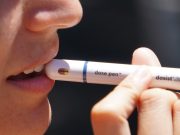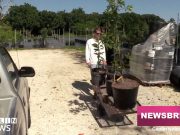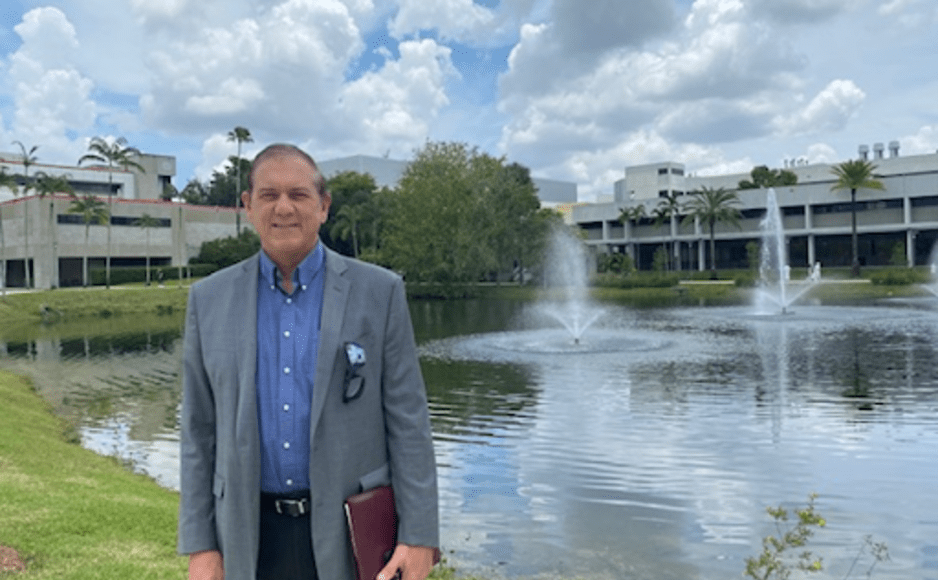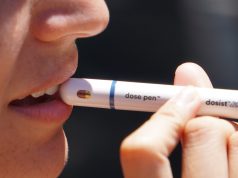HB 1191 is a new law that will allow the fertilizer industry to use phosphogypsum, a radioactive byproduct of phosphoric acid production, in the construction of Florida roads. It becomes effective starting July 1.
Naturally, many citizens are concerned about the health and safety of paving roads with a product that contains uranium, thorium and radium – and also emits radon gas, a leading cause of cancer.
In times like these, it is important to turn to science and logic before succumbing to panic and fear. Fortunately, Dr. David Roelant, director of Florida International University’s Nuclear Research Program, sees both advantages and disadvantages to the potential use of phosphogypsum.
“Everything is radioactive to begin with,” Roelant said. “My body is radioactive, the food I eat is radioactive, all soils, rocks, construction material are radioactive. How does one put the risk from exposure to radioactivity into perspective?”
Roelant has worked with radiation for over 40 years. He studied at the University of Michigan, obtaining his Ph.D. in nuclear engineering. He is also FIU’s radiation and laser safety officer. And he has worked with many types of gypsum, especially on the transport of these radioactive materials and how they impact people and the environment.
He takes an academic approach to using phosphogypsum in road construction. While the concern for health risks is certainly valid, Roelant emphasizes a crucial detail that citizens overlook with HB1191: the Florida Department of Transportation is required to do risk-analysis studies by April 1, 2024 before adding phosphogypsum into road construction for the public.
Use of the material in road construction has been studied before. While the United States has been more conservative in analyzing these areas, a 2004 study from Turkey found phosphogypsum could be a very economical and ecological alternative to natural gypsum.
A 2017 study from Cairo, Egypt, also examined the advantages and disadvantages of using phosphogypsum in construction, especially since according to the study, “Approximately 85% of this by-product is still discarded into the ocean or river, or stored in ponds or leaps without purification.” Ultimately, finding a way to purify and reuse this material may help the environment rather than leaving it in landfills or stacks.
“They should do the risk assessment of if you put it down, then what’s the rate at which various different radionuclides move from the material that you put down,” Roelant suggested. “And then, what’s the possibility that it can get into either drinking water, playgrounds, homes, [or] other sorts of stuff… Because I can imagine if I have a major water aquifer and I’m creating a road and I’m going right over some area where the city is pumping all their water, then everybody’s drinking.”
Fortunately, according to Roelant, the risk-analysis studies are an added advantage of HB1191. They will look at the leach rate, which measures how many particles of a substance get carried away under a specific amount of time. These materials can end up in lakes and ponds.
“With additional rainfall, for example, you might have additional movement of contaminants,” he said. “But the other positive thing is that whenever you have a whole bunch of rainfall, you dilute your radioactivity to such a low level that it’s not a concern anymore.”
Ironically, the biggest issue Roelant has witnessed over his long career is public skepticism over science.
“I’ve seen in the last decade a huge increase in conspiracy theories driven all over the Internet,” he said. “Part of the whole conspiracy theories and everything else is not trusting authorities, not believing…it becomes so divisive. That’s where we don’t believe in any science.”
Roelant believes current political tension is masking the real problem at hand when it comes to the climate crisis. For instance, when looking at HB1191 while understanding that everything is radioactive, it makes sense to attempt to reuse this material rather than continuing to stack it up in piles across the continent.
“Part of [HB1191] is really just about trying to save some money,” Roelant explained. “Many green companies are taking waste products and using them as building materials and hence changing a costly liability into a profit center…so it’s like a win-win as long as there are no additional issues that come up.”
As climate concerns continue to rise, the idea of recycling materials will always be thrown around – except for when radioactivity is concerned. While citizens are concerned over phosphogypsum in road construction, they ignore that hospitals have a much higher exposure to radiation from nuclear medicine, like x-rays and contrast.
At the end of the day, when considering the ramifications of HB1191, citizens must think rationally and depend on what scientists are actually concerned about. Radiation is often seen as a taboo word depending on the context. After all, phosphogypsum could prove to be both an economical and ecological alternative to construction for the future.
“I consider myself to be a scientist and a strong environmentalist,” Roelant said. “Yet, I am aware that many environmentalists have a simplistic view of radioactivity, that it is to be feared and avoided. I am also a businessman, and I see many industries driven more by profit than by safety or minimizing human health risk…at least we are finding a way to reuse this substance and make our roads at least a little bit better.”

































